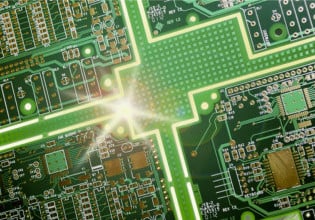Emerging government policies in Asia, Europe and North America are expected to help drive the adoption of digital power technologies, according to the latest analysis from Darnell Group, Inc. Several recent developments in government policies, combined with the maturing nature of digital power conversion, are converging to accelerate the adoption of digital power in a variety of applications.
"The European Union's recently announced action plan to cut energy consumption by 20% before 2020, combined with recent and pending actions from the Energy Star Program in the US and policy developments in China and other countries, will provide a boost to the adoption of digital power," according to Linnea Brush, Senior Research Analyst for this report. For example, use of digital control techniques can contribute to both improved power factor and improved conversion efficiencies of ac-dc power supplies across a wide range of conditions.
The U.S. Environmental Protection Agency (EPA) announced new Energy Star specifications for computers and related equipment. The newly issued Version 4.0 Tier 1 specification is scheduled to go into effect on July 20, 2007. The set-top box market, which is a fast-growing market set to hit 200 million units by 2011, is also a target of efficiency policies. Higher-power industrial and commercial power supplies offer the energy savings that regulators are after and are also under active consideration for efficiency targets.
Darnell Group's 237-page, Second Edition report on Emerging Markets in Digital Power Electronics: Component, Converter and System Level Opportunities details how this market will surge to nearly $800 million in digital power integrated circuit sales within five years. The Worldwide Digital IC market (which includes VR Loop Controllers, Non-VR Loop Controllers, PFC Loop Controllers, Converter Management ICs and System ICs) will be about $169 million in 2006, rising to $796 million in 2011, a compound annual growth rate of 36.4%.
Digital is already less expensive than analog if "multiple function" solutions are required for specific applications. These products are available now and offer early adopters advantages over simple analog solutions. Looking at absolute chip costs for analog and digital (on a silicon-to-silicon basis), the decline in prices for digital is expected to "cross over" with analog prices around 2008, with digital chips being cheaper than analog chips after that point. At that point, companies will no longer need to sell digital solutions based on features that make them more cost-effective than analog solutions. The choice will no longer be equal; digital silicon will be less expensive than analog silicon. Evolving government policies are reinforcing the trend toward digital power conversion.
The market at both the semiconductor and power conversion levels is expected to remain extremely competitive, with large multinational corporations competing with smaller regional companies for market share. In addition, a growing number of partnerships, acquisitions and alliances among companies are expected to have a significant impact in the growth and development of this industry.
Darnell's Digital Power Electronics report is now available.






